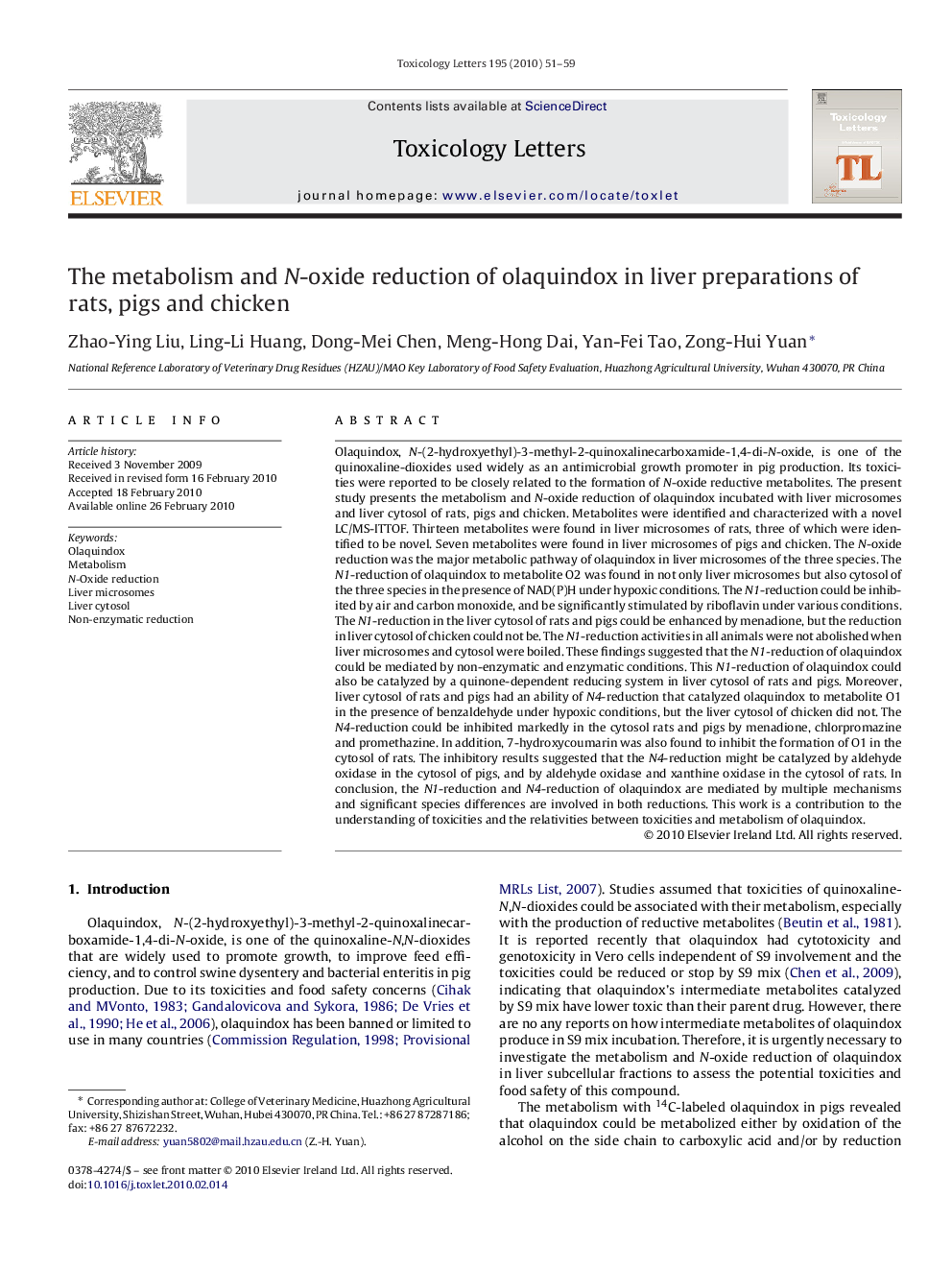| کد مقاله | کد نشریه | سال انتشار | مقاله انگلیسی | نسخه تمام متن |
|---|---|---|---|---|
| 2600151 | 1133257 | 2010 | 9 صفحه PDF | دانلود رایگان |

Olaquindox, N-(2-hydroxyethyl)-3-methyl-2-quinoxalinecarboxamide-1,4-di-N-oxide, is one of the quinoxaline-dioxides used widely as an antimicrobial growth promoter in pig production. Its toxicities were reported to be closely related to the formation of N-oxide reductive metabolites. The present study presents the metabolism and N-oxide reduction of olaquindox incubated with liver microsomes and liver cytosol of rats, pigs and chicken. Metabolites were identified and characterized with a novel LC/MS-ITTOF. Thirteen metabolites were found in liver microsomes of rats, three of which were identified to be novel. Seven metabolites were found in liver microsomes of pigs and chicken. The N-oxide reduction was the major metabolic pathway of olaquindox in liver microsomes of the three species. The N1-reduction of olaquindox to metabolite O2 was found in not only liver microsomes but also cytosol of the three species in the presence of NAD(P)H under hypoxic conditions. The N1-reduction could be inhibited by air and carbon monoxide, and be significantly stimulated by riboflavin under various conditions. The N1-reduction in the liver cytosol of rats and pigs could be enhanced by menadione, but the reduction in liver cytosol of chicken could not be. The N1-reduction activities in all animals were not abolished when liver microsomes and cytosol were boiled. These findings suggested that the N1-reduction of olaquindox could be mediated by non-enzymatic and enzymatic conditions. This N1-reduction of olaquindox could also be catalyzed by a quinone-dependent reducing system in liver cytosol of rats and pigs. Moreover, liver cytosol of rats and pigs had an ability of N4-reduction that catalyzed olaquindox to metabolite O1 in the presence of benzaldehyde under hypoxic conditions, but the liver cytosol of chicken did not. The N4-reduction could be inhibited markedly in the cytosol rats and pigs by menadione, chlorpromazine and promethazine. In addition, 7-hydroxycoumarin was also found to inhibit the formation of O1 in the cytosol of rats. The inhibitory results suggested that the N4-reduction might be catalyzed by aldehyde oxidase in the cytosol of pigs, and by aldehyde oxidase and xanthine oxidase in the cytosol of rats. In conclusion, the N1-reduction and N4-reduction of olaquindox are mediated by multiple mechanisms and significant species differences are involved in both reductions. This work is a contribution to the understanding of toxicities and the relativities between toxicities and metabolism of olaquindox.
Journal: Toxicology Letters - Volume 195, Issue 1, 19 May 2010, Pages 51–59